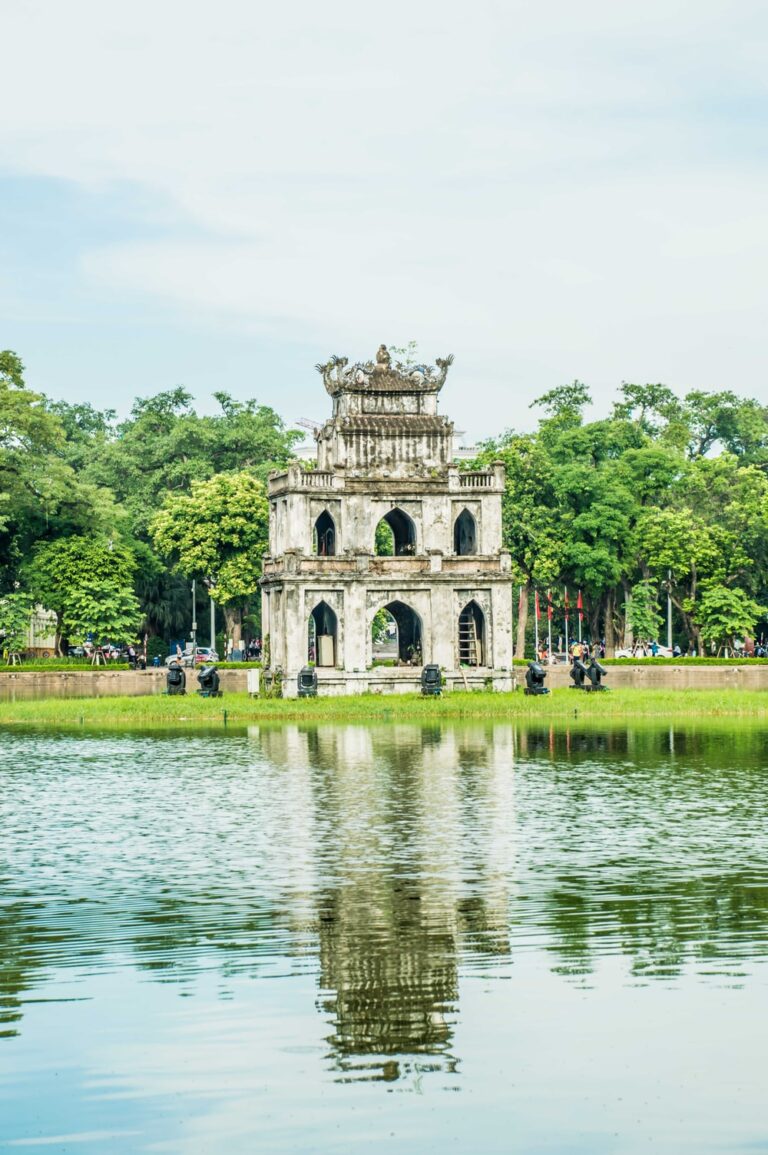Hanoi
Hanoi, its name was used as a place name in Vietnam from the 12th year of Minh Mang’s Dynasty when a province called Hanoi was established in Bac Thanh. The meaning of this name is the city surrounded by rivers and it also reflects the geographical location of Hanoi province. The province is located between two rivers, the Nhi river in the northeast and the Thanh Que river in the southwest. Having gone through many periods, the current developing capital “Hanoi” is with an area of more than 3324 km2 and the population of 9 million people.
History
The site where Hanoi now stands has been inhabited since the Neolithic period. Emperor Ly Thai To moved his capital from Hoa Lu to Hanoi in 1010 AD, renaming the site Thang Long (city of Soaring Dragon). Hanoi served as the capital of the Later Le dynasty, founded by Le Loi, from its establishment in 1428 till 1788 when it was overthrown by Nguyen Hue, founder of the Tay Son dynasty. The decision by Emperor Gia Long, founder of the Nguyen dynasty, to rule from Hue relegated Hanoi to the status of a regional capital.
Over the centuries, a variety of names of Hanoi has been born. One of them was Dong Kinh from which the Europeans derived the name they eventually applied to all of northern Vietnam, Tonkin. The city was named Hanoi by Emperor Tu Duc in 1831.
From 1902 to 1953, Hanoi served as the capital of French Indochina. This was largely because of Tonkin’s proximity to southern China, where the French sought to expand their influence and because of Tonkin’s mineral resources. Hanoi remained the administrative center during the Japanese occupation (1940-1945) of the territory.
In August 1945, following the Japanese surrender, the Viet Minh under the leadership of Ho Chi Minh seized power in Hanoi, and the city was established as the capital of the Democratic Republic of Vietnam. The French, however, reasserted their control over Hanoi from 1946 till their defeat at Dien Bien Phu on May 7th, 1954.
Shortly thereafter Hanoi became the capital of the Democratic Republic of Vietnam (North Vietnam). During the Vietnam war, the bombing of Hanoi by the United States of Americas in 1965, 1968 and 1972 caused massive damage. Following the collapse of south Vietnam on April 30th, 1975.
North Vietnam extended its control over all of Vietnam. On July 2nd, 1976, the Socialist Republic of Vietnam was proclaimed and Hanoi established as its capital. The city observed its 1,000th anniversary in early October 2010 by staging a number of events that culminated with a massive parade on October 10th.
Hanoi Opera House
Since 1954 Hanoi has been transformed from a primarily commercial city into an industrial and agricultural center. Manufactures include machine tools, electric generators and motors, plywood, textiles, chemicals, and matches. Rice, fruits and vegetables, cereals, and industrial crops are grown in the surrounding area.
Hanoi is also a communication center. Roads link Hanoi with other major Vietnamese cities and railway lines provide access to its port of Hai Phong, to Kunming in Yunnan province, China and Ho Chi Minh city ( Sai Gon). Small oceangoing vessels can sail to Hanoi on the Red River and many small rivers are navigable from the capital to most part of northern Vietnam.
Many of Hanoi’s centuries-old monuments and palaces have been destroyed by foreign aggression and civil war, but there remain several historical and scenic points. Among the latter is Hoan Kiem Lake. Historical sites include the Co Loa citadel, dating from the 3rd century BCE, the Temple of Literature (founded in 1070), dedicated to Confucius, the Mot Cot pagoda (1049) and the temple of the Trung sisters 1142. In addition, the Central sector of the Imperial Citadel of Thang Long, built in the 11th century, was designated in 2010 as a UNESCO world heritage site. The University of Hanoi, the Revolutionary Museum, the Army museum, and the Nationl History museum are important cultural institutions.

Hong River
Red River, Vietnamese Song Hong, Chinese Yuan Chiang, principal river of the northern Vietnam. It rises in the central Yunnan province, southwestern China and flows southeast in a deep, narrow gorge, across the Tonkin region, through Hanoi to enter the Gulf of Tonkin after a course of 750 miles (1200km). Its two major tributaries, the Song Lo on the left bank and the Black river on the right, boost the flow of water, which during the rainy season may reach 335,500 cubic feet per second. The Red River has a very irregular volume throughout the year and carries huge quantities of silt because of the large proportion of easily crumbled soil in its basin, especially in the red lands from which its name derives. This material is deposited in the river’s delta, a flat triangular region of about 2700 square miles that extends 93 miles inland and 50 miles along the coast. The delta constitutes a large part of northern Vietnam and is densely populated and intensively cultivated. Hai Phong, the ourport of Hanoi, is on a northern arm of the delta.
- ←
-
Email Us
Please send us an Email
